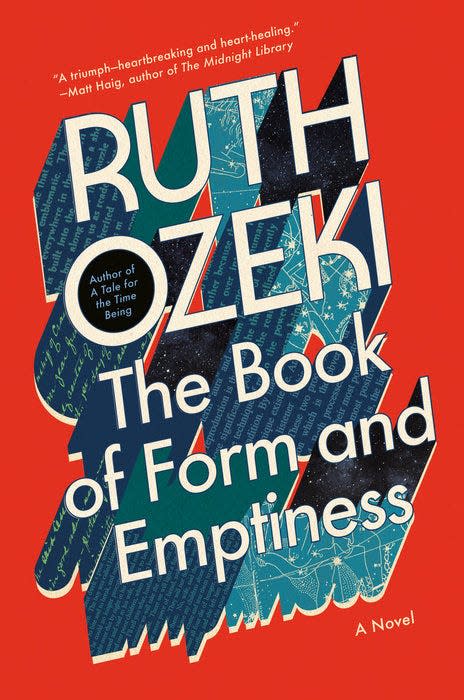'The Book of Form and Emptiness' a masterful meditation on consumer culture from Ruth Ozeki
In Ruth Ozeki's "The Book and Form and Emptiness" (Viking, 560 pp., ★★★★ out of four, out Tuesday), 13-year-old Benny Oh hears voices.
When a sparrow strikes a window in his classroom, the other children return to their work because they “were accustomed to death, and this was a minor one.” But the glass knows it has killed the bird and starts to whimper, “to vibrate as its cries grew shrill.” Because the window is crying, Benny can no longer concentrate on his schoolwork. After he starts pounding on the glass to get it to shut up, he’s sent to the principal’s office.
In some ways this episode could be read as an early symptom of mental illness, and Ozeki leaves that door open. But as narrated, Benny’s banging on the glass is a perfectly reasonable response to the heartache underlying everything in our world. Though Benny gets sent to the principal, then a therapist and finally a children’s psychiatric ward, maybe his is the most rational response to a consumer culture that positions material goods as the sources of our wellbeing.
National Book Award nominees: Lauren Groff's 'Matrix,' Robert Jones Jr. make the cut
5 books not to miss: Richard Power’s ‘Bewilderment,’ Anderson Cooper’s ‘Vanderbilt’

Benny’s had a hard year. His father died in a shocking accident the year before, and though his mother Annabelle loves him and wants to do best by him, she too is overwhelmed by the objects in her life. She hoards things to numb the pain of her husband’s death, making her most meaningful emotional connections with teapots and empty picture frames and decades-old newspapers, in the process becoming as much an outsider to the human world as her son.
Given his mother’s distractions, it’s all too easy for Benny to start skipping school and to head instead to the public library, where he finds peace in the voices of books. There he meets likeminded souls in the unhoused people who find refuge in the stacks. They also see the life within of the object world, and know that books themselves have especially pleasing voices. As the novel itself tells us, “We do our best to bring you pleasure and sustain your belief in the gravity of being human. We care about your feelings and believe in you completely.”
Yes, that’s "The Book and Form and Emptiness" itself talking to us. In another book that metatextual overlay might feel too clever or precious, but this novel’s earnest, self-deprecating voice merges effortlessly into Ozeki’s theme of the overlooked agency of objects.

Though Ozeki handled similar topics with perhaps more agility in her debut novel, "My Year of Meats," this novel’s meditative pacing perfectly suits its open-hearted contemplation. The book’s self-awareness allows it to comically hedge and tiptoe, to digress into diatribes into the “false dichotomies and hegemonic hierarchies of materialist colonizers” only to catch itself and sheepishly apologize: “Sorry. That turned into a rant. No reader likes a rant. As a book, we should know better.”
"The Book of Form and Emptiness" is concerned foremost with the outsiders in our world, the ones who hear voices, who are friendless, who fall into addiction and self-harm. It’s concerned, too, with the ultimate outsiders, the objects that we produce and discard, produce and discard. It is both profound and fun, a loving indictment of our consumer culture. As the novel asks the reader turning the pages, “has it ever occurred to you that books have feelings, too?”
More: 20 fall books we can’t wait to read by Katie Couric, Billy Porter, Jonathan Franzen and more
This article originally appeared on USA TODAY: Ruth Ozeki's 'The Book of Form and Emptiness' a masterful meditation

 Yahoo Movies
Yahoo Movies 
